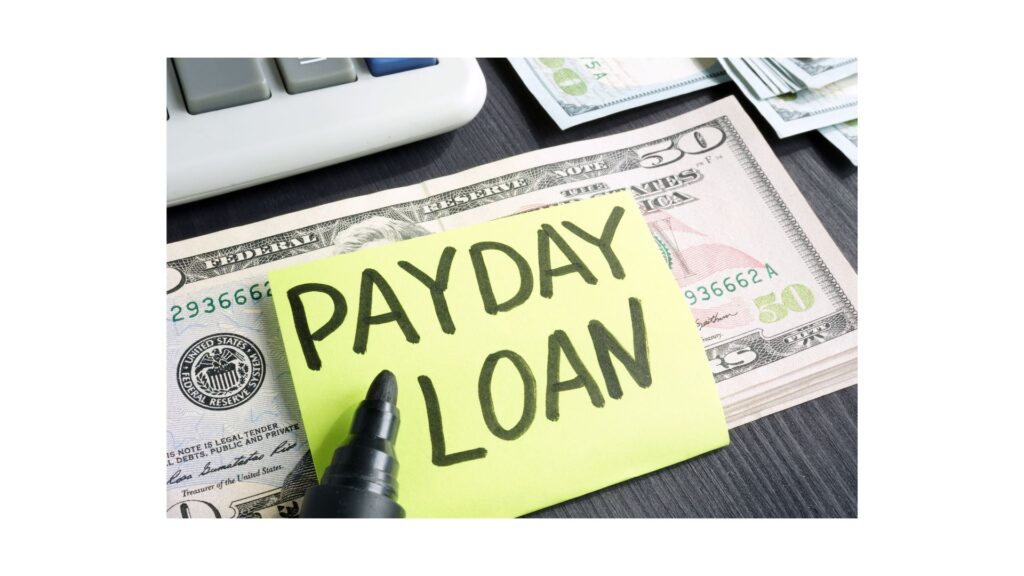Key Insights
- Interest Rates: In 2024, payday loan interest rates in the U.S. can vary from 200% to over 600% APR, depending on state regulations.
- Consumer Impact: High rates create a cycle of debt, particularly affecting financially vulnerable consumers who may lack access to traditional banking services.
- Regulatory Changes: Increased scrutiny on payday lenders may lead to reforms and potentially lower rates in certain states by 2025.
- Alternatives: Options like personal loans and community lending are becoming more popular as consumers seek better borrowing solutions.
Current State of Payday Loan Interest Rates

Overview of 2024 Rates
As of 2024, the average interest rates for payday loans in the United States vary significantly from state to state, influenced by a combination of state legislation, local market conditions, and the operational model of lenders. Generally, payday loan interest rates can range from 200% to over 600% APR, depending on the jurisdiction. For instance, states like Texas and Florida have some of the highest rates, often exceeding 600%, while states like Colorado and New Jersey have enacted more consumer-friendly regulations that cap interest rates at lower percentages, around 36% or less.
In 2024, the increasing scrutiny on payday lenders has led to a discussion on potential reforms, especially in states where rates are disproportionately high. Federal regulations are also a factor, as the Consumer Financial Protection Bureau (CFPB) continues to monitor and propose changes that could affect how lenders operate. These dynamics create a patchwork of interest rates across the country, making it crucial for borrowers to understand the specifics in their state and the implications for repayment.
Factors Influencing Rates
Several key factors contribute to the fluctuation of payday loan interest rates, notably economic conditions, regulatory changes, and market competition. Economic indicators such as inflation and unemployment rates can directly affect borrowing costs. For example, during periods of high inflation, lenders may increase interest rates to compensate for the declining purchasing power of money.
Regulatory changes also play a critical role in determining interest rates. For instance, if a state government passes stringent regulations limiting interest rates or requiring lenders to offer extended payment plans, this can lead to lower average rates for consumers. Conversely, if regulations are relaxed or enforcement weakens, lenders might increase rates, reflecting a riskier lending environment.
Finally, competition among lenders impacts rates as well. In markets where several payday lenders operate, competitive pressure may drive rates down, as companies vie for business. Conversely, in areas with limited lending options, rates can be significantly higher due to reduced competition.
Consumer Impact of Current Rates

The current landscape of payday loan interest rates has profound implications for consumers, particularly those already facing financial challenges. High interest rates create a cycle of debt that can be difficult to escape, leading to what many refer to as “debt traps.” Borrowers often find themselves in a position where they must take out additional loans to cover previous debts, a situation exacerbated by the compounding nature of high-interest costs.
In this environment, borrowers’ overall financial health is jeopardized. Many individuals who rely on payday loans do so because they lack access to traditional banking services, meaning they are already in a precarious financial situation. The burden of high interest rates can lead to missed payments and a cycle of financial instability, which can also negatively impact credit scores.
Moreover, the stress of managing high-interest debt can affect mental health and well-being, leading to an endless cycle of financial hardship. Understanding the implications of current rates is vital for consumers contemplating payday loans, as their decisions can significantly impact both immediate financial situations and long-term stability.
Expert Insights on How Payday Loan Interest Rates Are Changing in 2025
Predictions from Financial Analysts
Looking ahead to 2025, financial analysts project several changes in payday loan interest rates, influenced by market dynamics, regulatory frameworks, and consumer behavior. Analysts expect that the trend towards increased regulation will continue, potentially leading to lower average interest rates in some states.
Among the key predictions for 2025 are:
- Increased federal scrutiny may result in national rate caps being proposed.
- Technological advancements in lending could streamline operations, lowering costs for consumers.
- Higher inflation rates may force lenders to raise interest rates to mitigate risk.
- Consumer demand for alternative lending solutions may pressure traditional payday lenders to adjust their rates.
Analysts believe that as public awareness grows regarding the pitfalls of payday loans, consumers will increasingly seek alternatives, leading to potential shifts in how lenders approach pricing. The anticipated regulatory landscape could also create a more equitable borrowing environment, with an emphasis on responsible lending practices.
Regulatory Impact on Future Rates

New and proposed regulations are poised to significantly alter the landscape of payday loan interest rates in the coming years. The CFPB’s ongoing efforts to implement stricter guidelines for payday lenders could lead to reduced interest rates nationwide. These regulations may involve setting caps on the maximum allowable interest rates and requiring lenders to assess borrowers’ ability to repay loans before approval.
Additionally, several states are considering legislation aimed at protecting consumers from exorbitant interest rates. For example, states like California and New York are evaluating measures to limit rates and offer more consumer-friendly repayment options. As states take the initiative to implement these regulations, the resulting competitive pressure may force lenders to lower their rates or offer more affordable alternatives.
Regulatory changes also have the potential to impact the overall lending environment, making it more sustainable for both lenders and borrowers. As compliance becomes more stringent, lenders will have to adapt their business models, which may lead to a more equitable marketplace where consumers are not subjected to predatory practices.
Technological Advances and Rate Adjustments
Technological advancements in the financial sector, particularly within fintech, are revolutionizing the payday loan landscape. Digital lending platforms now leverage artificial intelligence and machine learning algorithms to assess risk more effectively and set interest rates accordingly. This shift allows for more personalized borrowing experiences, often resulting in lower rates for qualified borrowers.
Moreover, the rise of peer-to-peer lending platforms is challenging traditional payday lenders by offering competitive rates that are often much lower than those found in the payday loan market. These innovations encourage traditional lenders to reassess their pricing strategies in order to remain competitive, potentially leading to an overall reduction in payday loan interest rates.
As fintech continues to grow, there is also an increased emphasis on transparency and consumer education. Borrowers are becoming more informed about their options and are less likely to accept unfavorable loan terms, pressuring payday lenders to offer fairer rates. This technological evolution, combined with consumer demand for more ethical lending practices, is likely to profoundly influence payday loan interest rates in 2025.
Economic Factors Influencing Rate Changes
The interplay of macroeconomic factors such as inflation and employment rates will be critical in shaping payday loan interest rates in 2025. The ongoing economic recovery following recent recessions has been uneven, and analysts warn that any sudden shifts in economic stability could lead to fluctuating loan costs. For instance, if inflation continues to rise, lenders might increase interest rates to counterbalance the decreased value of money, making borrowing more expensive for consumers.
Employment rates also directly impact the demand for payday loans. In periods of high unemployment, more individuals may find themselves in need of short-term credit solutions, leading to increased demand for payday loans and potentially higher interest rates due to the elevated risk borrowers present. Conversely, if employment levels improve, the demand for payday loans may decline, potentially driving rates down as lenders compete for a smaller pool of borrowers.
Economic policies enacted at both the federal and state levels will further influence these trends. For example, stimulus packages aimed at supporting low-income households could reduce reliance on payday loans, thereby affecting the overall market dynamics. Understanding these economic factors is crucial for both consumers and lenders as they navigate the evolving landscape of payday loan interest rates.
How Are Payday Loan Interest Rates Regulated in 2025?
Federal Regulations on Payday Loans
In 2025, federal regulations regarding payday loans are expected to continue evolving, with increased scrutiny from regulatory agencies such as the CFPB. The CFPB has made it clear that it prioritizes consumer protection, and new guidelines may reflect this commitment. Some anticipated regulations include stricter assessment requirements for borrowers’ repayment abilities and limitations on rollovers or extensions, which have historically contributed to the cycle of debt.
Additionally, potential federal legislation may establish national caps on interest rates, which would unify the varying state regulations under a single framework, potentially lowering rates across the board. The impact of these regulations would likely be profound, as they could drastically change the operational landscape for payday lenders while providing borrowers with greater protections against predatory lending practices.
As these regulations come into effect, compliance measures will also be established to ensure that lenders adhere to the new standards, fostering a safer borrowing environment for consumers. These changes signify a shift towards a more responsible lending market, where transparency and consumer education are prioritized.
State-Specific Regulations
State regulations remain a crucial factor in determining payday loan interest rates in 2025. Each state has its own set of laws governing payday lending, resulting in significant variability across the country. States like California and New York have implemented caps on interest rates, limiting them to more manageable levels, while other states like Texas and Florida maintain higher rates due to less stringent regulations.
In 2025, several states are expected to introduce new legislation aimed at curbing high payday loan interest rates and improving consumer protections. For example, states may consider measures that require lenders to offer longer repayment terms or limit the number of times a borrower can roll over a loan. These developments will not only impact interest rates but also enhance borrower protections, helping to mitigate the risks associated with payday lending.
Moreover, as public awareness regarding the dangers of payday loans grows, consumer advocacy groups will likely continue to lobby for more stringent regulations, putting additional pressure on state governments to act. The evolving landscape of state-specific regulations is crucial for both borrowers and lenders, as it shapes the overall lending environment and affects the affordability of payday loans.
Enforcement and Compliance
Enforcement and compliance will play a pivotal role in ensuring that payday loan interest rates remain within regulated limits in 2025. Regulatory agencies such as the CFPB and state attorneys general are responsible for monitoring lenders to ensure adherence to established laws. This includes conducting regular audits and investigations into lending practices, as well as responding to consumer complaints.
Consequences for non-compliance can be severe, ranging from hefty fines to the revocation of lending licenses. For instance, lenders found violating state regulations may face significant penalties, prompting a recalibration of their interest rate structures to comply with legal standards.
As a result, maintaining compliance will become a priority for payday lenders, leading to a more transparent and ethical lending environment. This ongoing enforcement will help protect consumers from predatory practices while establishing a more balanced marketplace for both borrowers and lenders.
What Are the Alternatives to Payday Loans in 2025?
Personal Loans and Credit Cards
In 2025, personal loans and credit cards offer viable alternatives to payday loans, especially as awareness of the pitfalls associated with high-interest borrowing increases. Personal loans typically provide borrowers with fixed interest rates that are often significantly lower than those associated with payday loans, making them a more sustainable option for those in need of quick cash.
Credit cards, when used responsibly, can also serve as an alternative. They often come with introductory offers that include low or zero-interest rates for an initial period, allowing borrowers to manage their repayments without the burden of high-interest costs. However, it is essential for consumers to be aware of the potential for debt accumulation if payments are not made in full on time, as credit cards can carry high-interest rates once promotional periods end.
When comparing these options, borrowers should also consider the terms and conditions associated with personal loans and credit cards, such as repayment schedules and fees. While payday loans often require repayment within a short timeframe, personal loans can offer more extended repayment periods, providing greater flexibility and reducing financial strain.
Community and Non-Profit Lending Options
Community-based and non-profit lending options are increasingly gaining traction as alternative solutions to payday loans, especially for those seeking lower interest rates and more supportive repayment options. These organizations typically prioritize the financial well-being of their borrowers, offering loans with friendlier terms compared to traditional payday lenders.
The key benefits of community lending options include:
- Lower interest rates that are often capped to promote affordability.
- Flexible repayment terms designed to suit individual financial situations.
- Emphasis on financial education and support services to enhance borrowers’ financial literacy.
- Community-focused approaches that foster local economic growth and sustainability.
By connecting borrowers with resources and education, these non-profit lenders aim to empower individuals and help them achieve better financial health. As awareness of these alternatives grows, more consumers may turn to community lending options to avoid the pitfalls of payday loans, ultimately shaping a more equitable lending landscape.
Employer-Provided Financial Assistance
In 2025, employer-provided financial assistance programs are emerging as a strategic alternative to payday loans. Many employers are beginning to recognize the impact of financial stress on their employees’ productivity and overall well-being, leading to the implementation of programs that offer financial support.
These programs can take various forms, including salary advances, emergency funds, or access to low-interest loans as part of employee benefits. Such initiatives not only provide immediate financial relief but also foster a more supportive workplace culture, enhancing employee retention and satisfaction. Moreover, because employer-provided assistance typically comes with lower or no interest rates, it presents a far more affordable option compared to payday loans.
As the gig economy and remote work arrangements become more prevalent, employers may increasingly look for ways to support employees’ financial needs. The trend towards offering financial wellness benefits is expected to continue growing, providing consumers with more options to navigate financial challenges without resorting to high-interest payday loans.
Research-Backed Benefits of How Payday Loan Interest Rates Are Changing in 2025
Improved Borrower Financial Health
As payday loan interest rates begin to trend downward, the potential for improved borrower financial health becomes increasingly evident. Lower interest rates can significantly reduce the overall cost of borrowing, enabling individuals to pay off their loans more effectively. This can lead to a decrease in the cycle of debt that traps many borrowers, providing them with a path toward financial stability.
Actionable steps for borrowers include budgeting effectively, seeking financial education resources, and exploring alternative lending options that prioritize lower interest rates. By taking advantage of these opportunities, consumers can enhance their financial health, fostering better spending habits and long-term savings. This shift not only benefits individual borrowers but also positively impacts the broader economy by encouraging responsible borrowing and spending practices.
Reduced Default Rates
Changing interest rates can have a direct correlation with default rates among payday loan borrowers. As rates decrease, the affordability of loans improves, leading to lower instances of missed payments. With manageable repayment terms, borrowers are more likely to fulfill their obligations, resulting in reduced default rates.
This trend can have cascading effects, both for borrowers and lenders. For consumers, lower default rates enhance credit scores and overall financial stability, reinforcing a cycle of responsible borrowing. For lenders, reduced default rates can lead to improved profitability and a more sustainable business model, ultimately benefiting the entire lending ecosystem.
Enhanced Market Competition
The shifting landscape of payday loan interest rates is expected to stimulate enhanced market competition among lenders. As consumer awareness grows around the dangers of high-interest payday loans, and as alternative lending solutions gain prominence, traditional payday lenders are compelled to reevaluate their pricing structures and service offerings.
This competitive pressure may lead to improved terms for borrowers, including lower interest rates and more flexible repayment options. Additionally, as new players enter the market, the focus on responsible lending practices is likely to intensify, further benefiting consumers. The end result is a more dynamic marketplace that prioritizes borrower welfare while ensuring lenders remain viable in a changing economic landscape.
How Do Payday Loan Interest Rates Affect Different Demographics in 2025?
Impact on Low-Income Borrowers
In 2025, the impact of changing payday loan interest rates on low-income borrowers remains a critical concern. High-interest rates disproportionately affect individuals with limited financial resources, often leading to a cycle of debt that is difficult to escape. As rates increase, these borrowers face even greater challenges in managing their financial obligations.
The specific impacts on low-income borrowers include:
- Increased financial strain due to rising loan repayments.
- Reduced access to credit as lenders can tighten eligibility criteria.
- Higher likelihood of falling into debt traps, leading to long-term financial instability.
- Increased reliance on high-cost borrowing options, limiting opportunities for debt relief.
For low-income individuals, the consequences of payday loan interest rates can extend beyond immediate financial concerns, affecting overall well-being and future economic mobility. Awareness and advocacy for fair lending practices are essential to mitigate these challenges and support this vulnerable demographic.
Effects on Young Adults
Young adults often find themselves navigating financial challenges as they transition into independence, making them particularly susceptible to the implications of changing payday loan interest rates. With limited credit history and financial knowledge, many young adults may turn to payday loans for quick cash solutions, often at the expense of long-term financial health.
The challenges they face include higher interest rates than established borrowers and a lack of awareness regarding alternative lending options. However, the potential benefits of lower interest rates could provide young adults with more affordable borrowing solutions, enabling them to manage their finances more responsibly. Increased access to educational resources about financial literacy can empower young borrowers to make informed decisions, reducing their reliance on payday loans.
Influence on Senior Citizens
Senior citizens are increasingly becoming a significant demographic in the payday loan market, often seeking quick cash to cover unexpected medical expenses or living costs. The impact of changing interest rates on this group can be profound, as higher rates can exacerbate financial strain during retirement years. Many seniors live on fixed incomes, making it essential for them to find affordable and sustainable borrowing solutions.
As interest rates decline, seniors may find it easier to access essential funds without jeopardizing their financial security. However, they may also face challenges in navigating the lending landscape, particularly if they lack access to technology. Ensuring that senior citizens are aware of their options and have access to affordable lending solutions is crucial in protecting their financial well-being in 2025.
Impact on Minority Communities
Minority communities often experience unique challenges when it comes to accessing financial services, including payday loans. Changing interest rates can disproportionately affect these groups, as they may already face barriers to lower-cost credit options. Higher interest rates can further limit access to necessary funds, perpetuating systemic inequalities in financial access.
Conversely, as advocacy for fair lending practices grows and interest rates potentially decrease, minority communities may benefit from improved access to affordable credit. Initiatives aimed at increasing financial literacy and resource awareness within these communities can empower individuals to make informed financial choices, ultimately leading to better outcomes in loan repayment and financial health.
Strategies for Managing Payday Loan Interest Rates in 2025
Budgeting and Financial Planning
Effective budgeting and financial planning are essential strategies for managing payday loan interest rates in 2025. Borrowers must take proactive steps to create budgets that account for all income and expenses, ensuring they can meet their financial obligations without resorting to high-cost borrowing.
Utilizing tools such as mobile budgeting apps can help individuals track their spending, identify areas where they can cut costs, and allocate funds for loan repayments. By establishing a clear financial plan, borrowers can reduce reliance on payday loans, ultimately minimizing their exposure to high interest rates.
Additionally, financial education resources are crucial in helping consumers develop effective budgeting strategies. Workshops, online courses, and community programs can provide individuals with the knowledge they need to make informed financial decisions, putting them on a path toward greater financial stability.
Loan Comparison and Selection
When considering payday loans in 2025, comparing and selecting the best options is vital for achieving favorable interest rates. Borrowers should take the time to research multiple lenders, examining their terms, interest rates, and fees. Using online comparison tools can streamline this process, enabling borrowers to quickly identify which lenders offer the most competitive rates.
It is also essential for borrowers to read the fine print and understand the full cost of borrowing, including any hidden fees that may apply. Being informed about the terms and conditions will empower consumers to make choices that align with their financial goals, ensuring they secure loans with the best possible rates.
Debt Repayment Strategies
Implementing effective debt repayment strategies is crucial for mitigating the impact of payday loan interest rates. Borrowers should prioritize repayment by focusing on loans with the highest interest rates first, while also making minimum payments on other debts. This method, known as the “avalanche” approach, can help save money on interest over time.
Additionally, borrowers should consider negotiating with lenders for more favorable repayment terms. Many lenders may be open to providing extended payment plans or lower interest rates, particularly if borrowers demonstrate a commitment to repaying their debts. Open communication and proactive engagement can lead to better outcomes for borrowers striving to manage their loans effectively.
Interest Rate Negotiation Techniques
Negotiating lower interest rates on payday loans can be a valuable strategy for borrowers seeking to minimize their overall borrowing costs. Effective negotiation begins with preparation; borrowers should gather information about prevailing interest rates in their area and be ready to articulate their financial situation to lenders.
Offering to make automatic payments can often be a leverage point in negotiations, as it indicates reliability and reduces the lender’s risk. Additionally, demonstrating a strong repayment history with other loans can help persuade lenders to provide more favorable terms. Borrowers should approach negotiations confidently and be willing to explore alternatives if lenders are unwilling to meet their needs.
Regulatory Awareness and Advocacy
Staying informed about current regulations is essential for consumers navigating the payday loan landscape in 2025. Understanding the laws governing interest rates and borrowing practices empowers individuals to advocate for their rights and seek out lenders who adhere to ethical practices.
Consumers can engage with advocacy groups focused on financial justice to raise awareness about predatory lending practices and push for more stringent regulations. By participating in community forums and outreach programs, borrowers can play a vital role in influencing policy changes that benefit themselves and others facing similar financial challenges.
Future Outlook for Payday Loan Interest Rates Beyond 2025
Long-Term Economic Predictions
Looking beyond 2025, long-term economic predictions will likely play a significant role in shaping payday loan interest rates. As the economy continues to evolve, factors such as inflation, employment trends, and overall consumer confidence will impact lending practices. If economic indicators suggest a prolonged period of stability, conservative approaches to lending may emerge, resulting in a potential decrease in interest rates.
Conversely, should economic uncertainty prevail, lenders may adjust their interest rates to reflect heightened risk, leading to less favorable borrowing conditions for consumers. Staying informed about these economic trends is essential for both borrowers and lenders as they navigate the complexities of the lending landscape.
Technological Innovations in Lending
Technological innovations in the lending industry will continue to reshape the future of payday loans. Advances in blockchain technology, artificial intelligence, and data analytics are paving the way for more efficient lending processes. These innovations can lead to reduced operational costs for lenders, allowing them to pass on savings to consumers in the form of lower interest rates.
In addition, the proliferation of digital lending platforms and peer-to-peer lending networks will likely introduce more competition into the marketplace. As borrowers become more aware of their options, traditional payday lenders may be compelled to adapt their offerings to retain market share, ultimately benefiting consumers through improved rates and services.
Evolving Regulatory Landscape
The regulatory landscape surrounding payday loans is expected to continue evolving beyond 2025, with a push towards more stringent consumer protections. Ongoing advocacy for fair lending practices may result in new laws that cap interest rates and enhance transparency in lending agreements.
As regulations tighten, lenders will need to adapt their business models, potentially leading to a reduction in profit margins. This shift could prompt a reevaluation of interest rates, as lenders strive to remain competitive while adhering to new guidelines. The outcome will likely create a more equitable lending environment for borrowers in the long run.
Impact of Global Economic Trends
Global economic trends will also influence payday loan interest rates in the United States beyond 2025. Economic fluctuations in major markets can have a cascading effect on interest rates, as lenders adjust their practices based on international borrowing costs and investor sentiment.
For instance, if global interest rates rise, domestic lenders may follow suit, leading to higher borrowing costs for consumers. Conversely, a downturn in global markets may prompt lenders to lower rates to stimulate borrowing. Understanding these international dynamics is crucial for consumers and lenders alike as they navigate the future of payday loans.
Consumer Behavior and Demand Shifts
Finally, changes in consumer behavior and demand for payday loans will play a significant role in shaping interest rates moving forward. As borrowers become more educated about their options and the risks associated with payday loans, there may be a noticeable shift toward alternative lending solutions.
This demand for more ethical borrowing practices may pressure traditional payday lenders to adjust their offerings, resulting in lower interest rates and more favorable terms. By fostering a culture of informed borrowing, consumers can encourage lenders to prioritize responsible lending practices, ultimately transforming the payday loan landscape for the better.
FAQs
What are payday loans?
Payday loans are short-term, high-interest loans intended to provide quick cash to borrowers, typically due on the borrower’s next payday. They often come with very high-interest rates, leading to potential financial difficulties for borrowers.
How do interest rates for payday loans vary by state?
Interest rates for payday loans can vary widely by state due to different regulations. Some states impose caps on interest rates, while others allow lenders to charge significantly higher rates, creating a patchwork of lending practices across the country.
What factors influence payday loan interest rates?
Factors influencing payday loan interest rates include economic conditions, regulatory changes, lender competition, and consumer demand. Changes in inflation and employment rates also play a significant role in determining borrowing costs.
Are there alternatives to payday loans?
Yes, alternatives to payday loans include personal loans, credit cards, community lending programs, and employer-provided financial assistance. These options often come with lower interest rates and more manageable repayment terms.
How can I negotiate a better interest rate on a payday loan?
Negotiating a better interest rate involves preparation, such as researching comparable rates and demonstrating your repayment history. Offering automatic payments may also strengthen your position during negotiations.
What are the potential consequences of high payday loan interest rates?
High payday loan interest rates can lead to a cycle of debt, making it difficult for borrowers to manage repayments. This can result in increased financial strain, lower credit scores, and overall poor financial health.
How can budgeting help with managing payday loan repayments?
Budgeting allows borrowers to allocate their income effectively, ensuring they can meet loan repayments without resorting to additional borrowing. It promotes financial discipline and aids in achieving long-term financial stability.
What regulatory changes are expected for payday loans in 2025?
In 2025, potential regulatory changes may include national caps on interest rates, stricter assessment requirements for borrowers’ repayment capabilities, and enhanced consumer protections to prevent predatory lending practices.
How do payday loans affect low-income borrowers?
Low-income borrowers are particularly vulnerable to high payday loan interest rates, which can exacerbate financial instability. They may face higher rates and limited access to alternative lending options, increasing their risk of falling into debt traps.
What should I consider before taking out a payday loan?
Before taking out a payday loan, consider the total cost of borrowing, your ability to repay the loan on time, alternative lending options, and the potential impact on your overall financial health.

A Mississippi-based financial consultant with over a decade of experience in personal finance and payday lending. Originally from Jackson, he holds certifications in financial planning and credit advisory. Passionate about helping everyday Americans make smarter borrowing decisions, he focuses on guiding people away from common debt traps while promoting healthy financial habits. His expertise bridges the gap between short-term loan needs and long-term money management strategies. Outside of work, he volunteers with local programs that promote financial literacy across Mississippi.





Your insights on the payday loan landscape in 2024 really highlight a troubling issue that many in our society face. It’s disheartening to think about how such exorbitant interest rates can trap financially vulnerable individuals in a cycle of debt, often when they are at their most desperate. I can’t help but reflect on how access to fair financial services is not just a matter of economics but also of health and well-being.